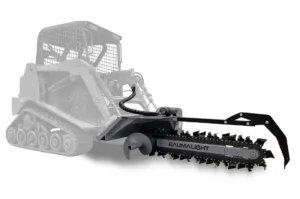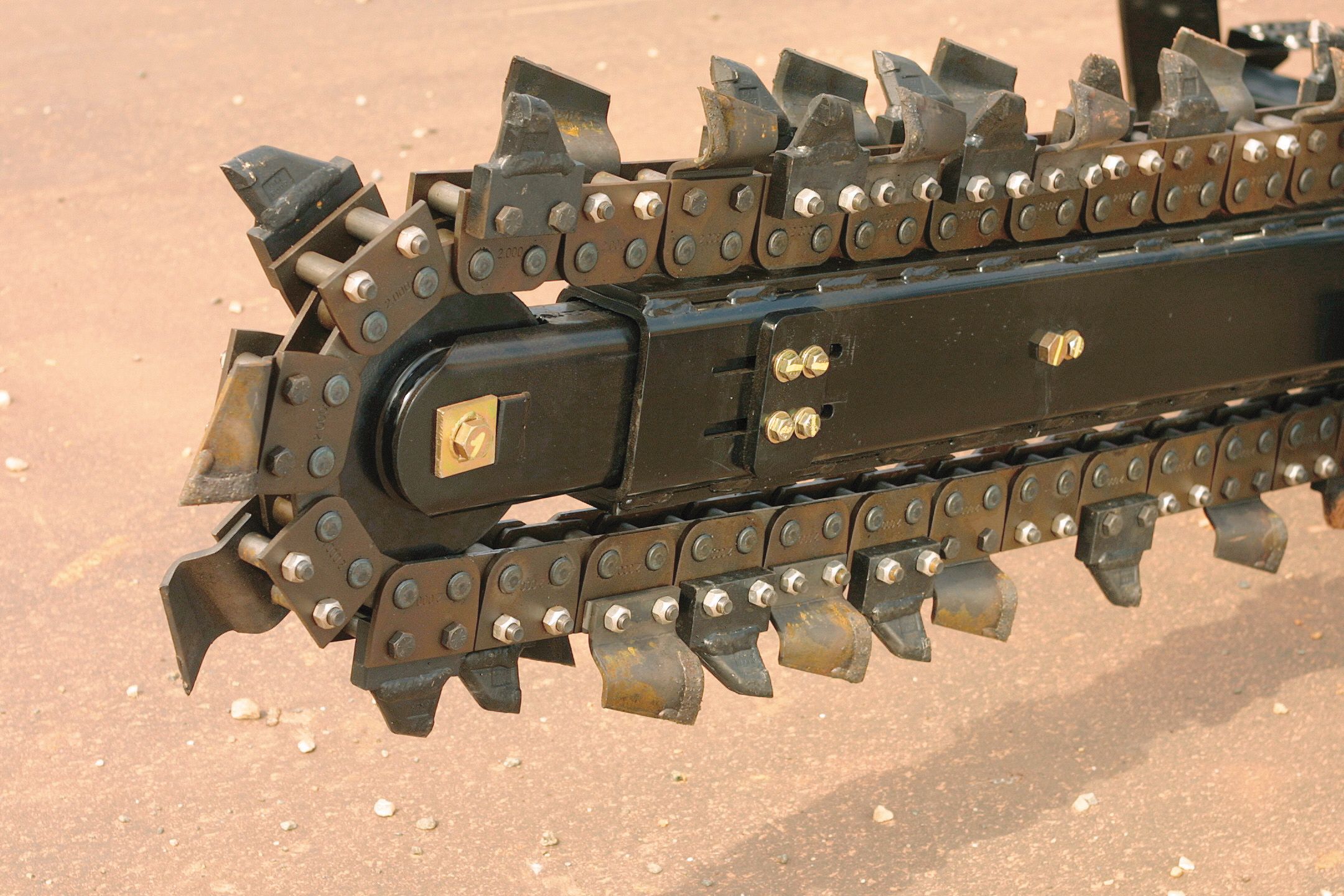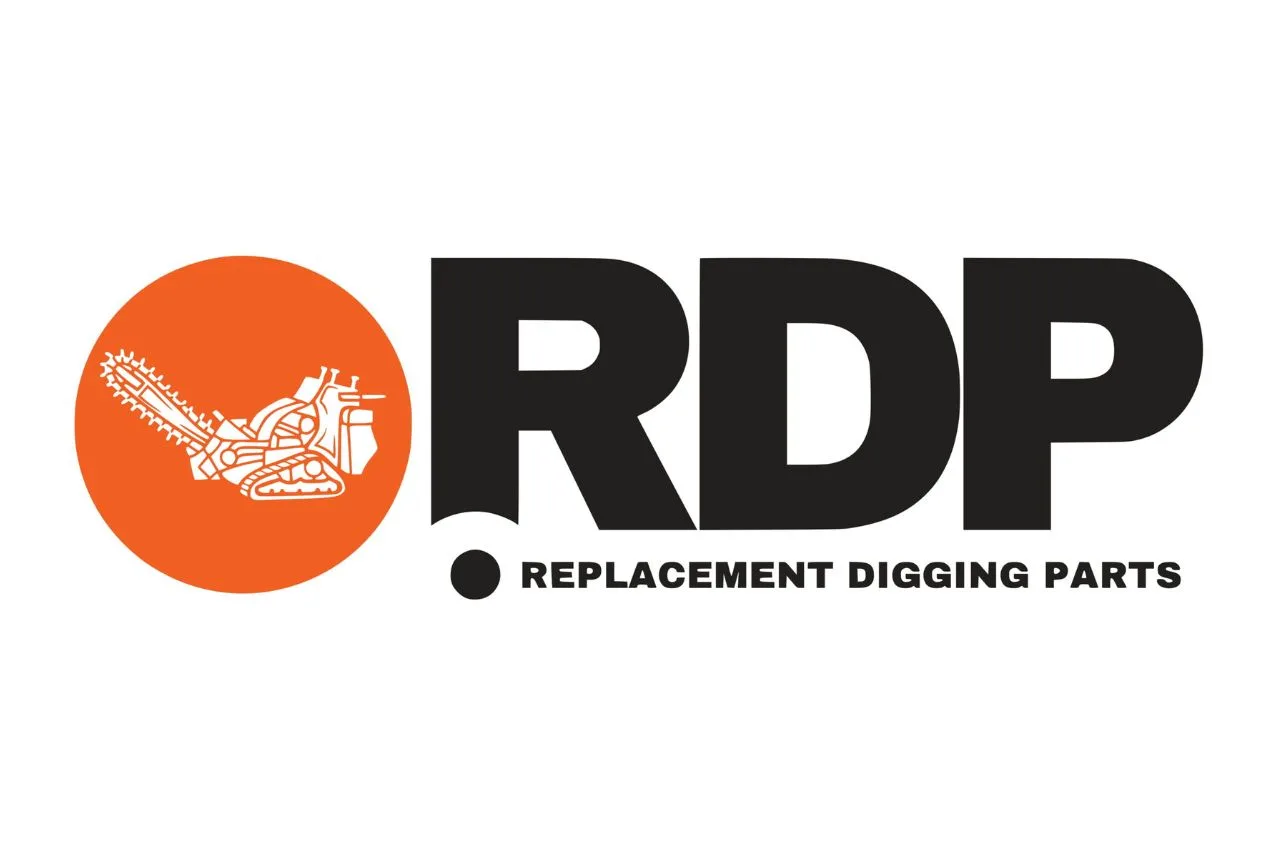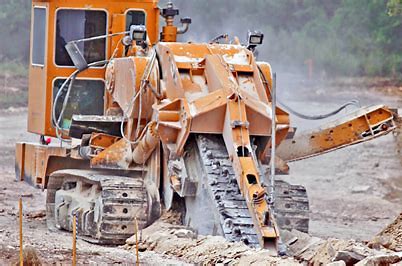
Are you struggling to maximize your trencher efficiency on job sites? Strategic parts selection can significantly boost your trencher’s performance, reducing downtime and increasing productivity. This article will cover key components that impact efficiency, criteria for selecting high-performance parts, and maintenance strategies to sustain optimal operation. By the end, you’ll understand how to customize your trencher’s parts for specific project needs, potentially lowering hydraulic pressure and reducing crop injury during manufacturing processes. Learn how to make informed decisions that can lead to substantial efficiency gains in your trenching operations.
Key Takeaways
- Strategic parts selection significantly improves trencher efficiency, productivity, and cost-effectiveness in various soil conditions
- Regular maintenance and early wear detection reduce downtime and extend equipment lifespan
- Customized trencher configurations can overcome project challenges and improve performance in specific environments
- Operator training on equipment care and best practices is crucial for maintaining trencher efficiency
- Investing in high-quality trencher parts can yield substantial returns through increased productivity and reduced maintenance costs
Understanding How Parts Selection Impacts Trencher Efficiency

Parts selection significantly impacts trencher efficiency, affecting performance, cost, and longevity. This section examines the role of each component, identifies efficiency issues caused by worn parts, and evaluates cost implications. Understanding these factors enables operators to leverage innovative technology, reduce stress on the tractor, and optimize trenching angles for maximum productivity.
Assessing the Role of Each Component in Trencher Performance
Each component in a trencher plays a crucial role in its overall performance and efficiency. The chain, teeth, and sprockets work together to cut through soil and create trenches for pipelines or optical fiber installations. As these parts wear over time, they can significantly impact the trencher’s efficiency, potentially leading to decreased productivity and increased fuel consumption. Regular inspection and timely replacement of worn components, such as teeth, ensure optimal performance and maintain the trencher’s efficiency in various soil conditions.
Identifying Common Efficiency Issues Caused by Worn or Incompatible Parts
Worn or incompatible parts can severely compromise trencher efficiency, leading to a range of issues that impact performance and productivity. Damaged teeth or chains can result in inadequate cutting depth, uneven trench walls, and increased fuel consumption. These problems not only affect the quality of the trenching work but also put additional strain on the trencher’s engine and hydraulic systems. Incompatible parts may cause excessive vibration, accelerated wear, and potential damage to other components, ultimately reducing the trencher’s overall health and longevity. To maintain optimal efficiency and ensure smooth operation, operators must regularly inspect and replace worn parts, considering factors such as soil conditions, trenching depth, and the specific requirements of each project:
- Inspect teeth and chains for wear and damage
- Check sprocket alignment and condition
- Evaluate hydraulic system performance
- Assess boom and auger functionality
- Monitor engine performance and fuel consumption
Evaluating the Cost Implications of Inefficient Parts Usage
Inefficient parts usage in trenchers leads to significant cost implications, affecting both immediate expenses and long-term operational efficiency. When operators neglect to replace worn components or use incompatible parts, they risk increased fuel consumption, reduced productivity, and potential damage to other trencher systems. In emergency situations, using subpar parts can lead to unexpected breakdowns, causing project delays and additional repair costs. Proper parts selection and maintenance not only improve performance across various terrains but also contribute to more efficient recycling of excavated materials, ultimately enhancing the trencher’s versatility for tasks like cultivation and plant installation. To mitigate these costs and optimize trencher efficiency, operators should consider the following factors:
- Regular maintenance schedules
- Quality of replacement parts
- Compatibility with specific trencher models
- Environmental conditions and soil types
- Operator training and best practices
Key Trencher Components That Influence Efficiency

Key trencher components significantly impact efficiency, affecting groundwork quality and operational costs. Cutting chains, teeth, hydraulic systems, booms, drive motors, and mobility options all play crucial roles. Proper selection and maintenance of these parts mitigate wear and tear, reduce fuel consumption, and enhance performance across various terrains. Understanding these components’ functions helps operators optimize trencher efficiency and minimize corrosion-related issues.
Importance of Cutting Chains and Teeth Specifications
Cutting chains and teeth specifications are critical components that directly impact trencher efficiency and performance. The design and material composition of these parts influence their ability to cut through various soil types, affecting transmission efficiency and reducing friction. Regular maintenance of cutting chains and teeth is essential for optimal performance, as worn components can lead to increased fuel consumption and decreased productivity. Trencher operators should consider the following factors when selecting and maintaining cutting chains and teeth:
- Soil type and hardness
- Desired trench depth and width
- Tooth design and material
- Chain pitch and tensioning
- Prototype testing for new designs
Impact of Hydraulic Systems on Operational Smoothness
Hydraulic systems play a crucial role in ensuring operational smoothness for trenchers. These systems control the force applied to the cutting chain, foot, and hammer, allowing operators to adjust the trencher’s performance based on soil conditions. Efficient hydraulic systems reduce strain on the trenchers engine, optimizing fuel consumption and minimizing wear on components. By employing advanced hydraulic methodology, trenchers can maintain consistent digging force across various terrains, resulting in more precise and efficient trench formation:
Selecting the Appropriate Trencher Boom Length and Type
Selecting the appropriate trencher boom length and type is crucial for optimizing efficiency in various soil conditions. Longer booms allow for deeper trenches, but they require more powerful diesel engines and hydraulic pumps to maintain performance. Shorter booms offer greater maneuverability, making them ideal for projects with space constraints or frequent direction changes. Advanced robotics and drill attachments can enhance the versatility of trencher booms, enabling operators to adapt to different soil compositions and project requirements efficiently.
Role of Drive Motors and Gearboxes in Power Transmission
Drive motors and gearboxes play a crucial role in power transmission for trenchers, ensuring efficient operation across various terrains. These components work in tandem to convert the engine’s power into the mechanical force needed for digging, much like how a concrete mixer’s drivetrain operates. By optimizing gear ratios and motor specifications, trencher manufacturers can enhance sustainability and reduce fuel consumption. Advanced telematics systems can monitor drive motor performance, allowing operators to adjust settings for optimal efficiency during transport and operation.
Choosing Between Tracks and Wheels for Different Terrains
Choosing between tracks and wheels for trenchers depends on terrain conditions and project requirements. Tracks offer superior traction and stability in soft or uneven terrain, making them ideal for infrastructure projects in challenging environments. Wheels, on the other hand, provide better maneuverability and higher travel speeds, suitable for urban areas or projects requiring frequent relocation. Some modern trenchers feature interchangeable track and wheel systems, allowing operators to adapt to various conditions without the need for separate machines. This versatility can significantly impact project efficiency and tool longevity, potentially offsetting the higher initial price of such equipment:
Criteria for Selecting High-Performance Trencher Parts
Selecting high-performance trencher parts is crucial for maximizing efficiency and longevity. This section explores key criteria, assessing material durability, ensuring equipment compatibility, balancing cost and quality, and sourcing reliable suppliers. These factors directly impact wheel management, trencher diameter, and drainage capabilities, influencing overall performance and operational lifespan.
Understanding Material Durability and Wear Resistance
Understanding material durability and wear resistance is crucial when selecting high-performance trencher parts. The choice of materials directly impacts the equipment’s longevity and efficiency, particularly in challenging trench conditions. Operators must consider factors such as soil abrasiveness, moisture content, and expected machine usage to determine the most suitable materials for components like teeth, chains, and tires. By selecting parts with optimal wear resistance, trencher owners can minimize downtime, reduce replacement costs, and maintain consistent performance across various parameters.
Ensuring Compatibility With Existing Equipment Models
Ensuring compatibility with existing equipment models is crucial for maximizing trencher efficiency and minimizing downtime. Operators must consider factors such as engine specifications, hydraulic system requirements, and attachment compatibility when selecting parts for their trencher models. By choosing components that seamlessly integrate with existing systems, operators can maintain optimal performance for tasks like pipe installation and prevent issues such as premature wear or engine failure. Compatibility also extends to software and control systems, especially in modern trenchers equipped with advanced features for precise depth control and sink prevention:
Balancing Cost and Quality in Parts Procurement
Balancing cost and quality in parts procurement is crucial for maximizing trencher efficiency and ensuring a positive return on investment. While high-quality components like tungsten carbide teeth may have higher upfront costs, they often lead to increased productivity and reduced downtime, ultimately providing better value over time. Operators must carefully evaluate the long-term benefits of premium parts against budget constraints, considering factors such as expected usage, soil conditions, and the potential impact on the trenchers performance to make informed procurement decisions.
Sourcing Reliable Suppliers and Verifying Part Authenticity
Sourcing reliable suppliers and verifying part authenticity are crucial steps in maintaining trencher efficiency. Operators should prioritize suppliers with a proven track record of providing high-quality components, such as steel parts and lubricants, that meet the demanding requirements of heavy equipment. When sourcing from international markets like China, thorough vetting of suppliers and implementing rigorous quality control measures can help ensure the authenticity and performance of trencher parts, ultimately contributing to improved speed and productivity on job sites.
Customizing Trencher Parts for Specific Project Needs

Customizing trencher parts for specific project needs is crucial for maximizing efficiency. This section explores adapting cutting components for various soil conditions, modifying hydraulic settings, optimizing trencher configuration for trench dimensions, and implementing custom solutions for unique challenges. By tailoring components like trencher teeth and sprockets, operators can enhance performance across diverse agricultural and construction applications.
Adapting Cutting Components for Various Soil Conditions
Adapting cutting components for various soil conditions is crucial for maximizing trencher efficiency. Operators must select the appropriate carbide, cup teeth, and chain configurations to effectively handle different earth types, from soft landscape soils to hard rocky terrain. By optimizing these components, trenchers can maintain consistent torque and productivity across diverse plumbing and construction projects. Key factors to consider when adapting cutting components include:
- Soil composition and density
- Presence of rocks or other obstacles
- Required trench depth and width
- Environmental conditions (e.g., moisture content)
- Project-specific requirements (e.g., utility installation)
Modifying Hydraulic Settings for Enhanced Efficiency
Modifying hydraulic settings enhances trencher efficiency by optimizing power distribution and control. Construction vehicle operators can adjust pressure and flow rates to match specific soil conditions, improving the loader’s performance and reducing wear on components. This customization allows for precise control over digging depth and speed, crucial for projects involving concrete installation or utility trenching. By fine-tuning hydraulic settings, operators maximize productivity while minimizing fuel consumption, providing valuable information for project planning and cost estimation.
Optimizing Trencher Configuration for Trench Dimensions
Optimizing trencher configuration for trench dimensions is crucial for efficient irrigation projects and water policy implementation. Operators must select the appropriate boom length, chain type, and tooth configuration to achieve the desired trench width and depth, particularly in clay-rich soils. By carefully adjusting these components, trenchers can minimize the risk of over-excavation and ensure precise water flow in agricultural and construction applications. The following table illustrates the relationship between trencher components and trench dimensions:
Implementing Custom Solutions for Unique Trenching Challenges
Implementing custom solutions for unique trenching challenges requires innovative approaches to digging equipment and techniques. Trencher operators often encounter obstacles such as rocky terrain, underwater environments, or confined spaces that demand specialized adaptations. By collaborating with engineers and manufacturers, companies can develop custom attachments, modified cutting chains, or specialized digging tools to address these specific challenges. These tailored solutions not only improve trenching efficiency but also enhance safety and reduce project timelines in complex environments:
- Develop specialized cutting teeth for extreme soil conditions
- Design compact trencher attachments for confined urban spaces
- Create reinforced components for underwater trenching operations
- Implement advanced sensors for precision digging in sensitive areas
- Customize hydraulic systems for improved performance in harsh climates
Maintenance Strategies to Sustain Trencher Efficiency
 Effective maintenance strategies are crucial for sustaining trencher efficiency. This section explores routine inspection protocols, early wear detection, operator training, performance data utilization, and regular part updates. These practices ensure optimal trencher performance, minimize downtime, and extend equipment lifespan, ultimately improving project outcomes and cost-effectiveness.
Effective maintenance strategies are crucial for sustaining trencher efficiency. This section explores routine inspection protocols, early wear detection, operator training, performance data utilization, and regular part updates. These practices ensure optimal trencher performance, minimize downtime, and extend equipment lifespan, ultimately improving project outcomes and cost-effectiveness.
Establishing Routine Inspection and Maintenance Protocols
Establishing routine inspection and maintenance protocols is crucial for sustaining trencher efficiency. Regular checks of critical components such as cutting chains, teeth, and hydraulic systems help identify potential issues before they escalate into major problems. Operators should follow manufacturer-recommended maintenance schedules, which typically include daily visual inspections, weekly lubrication routines, and monthly comprehensive evaluations. By implementing these protocols, companies can minimize downtime, extend equipment lifespan, and optimize performance across various trenching applications:
Early Detection of Part Wear and Timely Replacement
Early detection of part wear and timely replacement are crucial for maintaining trencher efficiency. Operators should implement regular inspections using advanced diagnostic tools to identify signs of wear on critical components such as teeth, chains, and sprockets. By establishing wear thresholds and tracking component performance over time, maintenance teams can schedule replacements proactively, minimizing unexpected breakdowns and optimizing equipment uptime. This approach not only enhances productivity but also reduces overall maintenance costs and extends the trencher’s operational lifespan:
Training Operators on Best Practices for Equipment Care
Training operators on best practices for equipment care is essential for maintaining trencher efficiency and longevity. Comprehensive training programs should cover proper operation techniques, daily maintenance routines, and troubleshooting procedures. By educating operators on the importance of regular inspections, proper lubrication, and correct usage of controls, companies can significantly reduce wear and tear on critical components. Effective training also empowers operators to identify potential issues early, preventing costly breakdowns and minimizing downtime:
Utilizing Performance Data to Inform Maintenance Decisions
Utilizing performance data is crucial for informed maintenance decisions in trencher operations. By analyzing metrics such as digging speed, fuel consumption, and component wear rates, maintenance teams can identify trends and predict potential failures before they occur. This proactive approach allows companies to schedule maintenance during planned downtime, reducing unexpected disruptions and optimizing overall trencher efficiency. Advanced telematics systems can provide real-time data on trencher performance, enabling operators to make immediate adjustments and prevent excessive wear on critical parts.
Scheduling Regular Updates and Upgrades to Trencher Parts
Scheduling regular updates and upgrades to trencher parts is essential for maintaining peak performance and efficiency. By implementing a proactive replacement schedule, operators can ensure that critical components are replaced before they fail, minimizing unexpected downtime and maintaining optimal digging capabilities. This approach allows companies to take advantage of technological advancements in trencher parts, such as improved materials or design features that enhance durability and performance. A well-planned upgrade schedule can significantly extend the operational life of trenching equipment while improving productivity and reducing overall maintenance costs:
Case Studies Demonstrating Efficiency Gains Through Strategic Parts Selection

Case studies demonstrate significant efficiency gains achieved through strategic parts selection in trencher operations. These examples showcase improved productivity in challenging terrain, cost savings from reduced downtime, enhanced trench quality, successful project completion with customized configurations, and positive returns on investment from parts upgrades. Each case study provides valuable insights into optimizing trencher performance through careful component selection.
Improving Productivity in Challenging Terrain With Specialized Parts
A case study from a major pipeline construction project in the Rocky Mountains demonstrated significant productivity gains through the use of specialized trencher parts. The company equipped their trenchers with heavy-duty carbide-tipped teeth and reinforced chains designed for rocky terrain. These upgrades resulted in a 30% increase in digging speed and a 50% reduction in tooth replacements, allowing the project to stay on schedule despite challenging soil conditions. The specialized parts not only improved efficiency but also reduced overall equipment wear, leading to lower maintenance costs and extended machine lifespan.
Achieving Cost Savings by Reducing Downtime
A municipal water utility achieved significant cost savings by implementing a strategic parts selection program for their trencher fleet. By upgrading to high-durability components and implementing a proactive replacement schedule, the utility reduced unplanned downtime by 65% over a 12-month period. This improvement resulted in substantial cost savings and increased project completion rates. The success of this initiative is illustrated in the following table:
Enhancing Trench Quality With Precision Parts Selection
A telecommunications company significantly enhanced trench quality by implementing precision parts selection for their fiber optic cable installation projects. By utilizing custom-designed cutting teeth and optimized chain configurations, the company achieved a 40% improvement in trench wall smoothness and consistency. This precision resulted in faster cable laying, reduced risk of damage to cables during installation, and minimized soil disruption. The enhanced trench quality not only improved project efficiency but also reduced long-term maintenance requirements for the installed fiber optic networks.
Overcoming Project Hurdles With Customized Trencher Configurations
A construction company successfully overcame project hurdles by implementing customized trencher configurations for a challenging urban drainage project. By utilizing a combination of specialized cutting teeth, reinforced chains, and a modified boom assembly, the company achieved a 25% increase in trenching speed while maintaining precise depth control in varied soil conditions. This customized approach not only accelerated project completion but also reduced the impact on surrounding infrastructure, minimizing disruptions to local businesses and residents. The success of this project is illustrated in the following table:
Analyzing Return on Investment From Parts Upgrades
A comprehensive analysis of return on investment (ROI) from parts upgrades in a major excavation company revealed significant financial benefits. The company invested $150,000 in high-performance cutting chains and teeth for their trencher fleet, resulting in a 35% increase in productivity and a 40% reduction in maintenance costs over a 12-month period. This strategic upgrade led to an estimated annual savings of $425,000, yielding a remarkable ROI of 283% within the first year. The success of this initiative demonstrates the substantial impact of carefully selected parts on trencher efficiency and overall project profitability:
- Initial investment: $150,000 in upgraded parts
- Productivity increase: 35%
- Maintenance cost reduction: 40%
- Annual savings: $425,000
- First-year ROI: 283%
Conclusion
Strategic parts selection is crucial for maximizing trencher efficiency, directly impacting performance, cost-effectiveness, and project outcomes. At Replacement Digging Parts, we specialize in providing high-quality components that help operators reduce downtime, improve productivity, and extend equipment lifespan across various challenging terrains and project requirements. By carefully choosing and maintaining the right parts, operators can optimize their trenching operations. Implementing proactive maintenance strategies, utilizing performance data, and investing in operator training further enhance the benefits of strategic parts selection. Ultimately, the combination of thoughtful parts selection from Replacement Digging Parts and comprehensive maintenance practices leads to substantial efficiency gains, cost savings, and improved project success rates in trenching operations. For expert guidance and premium parts, Contact Replacement Digging Parts today.


